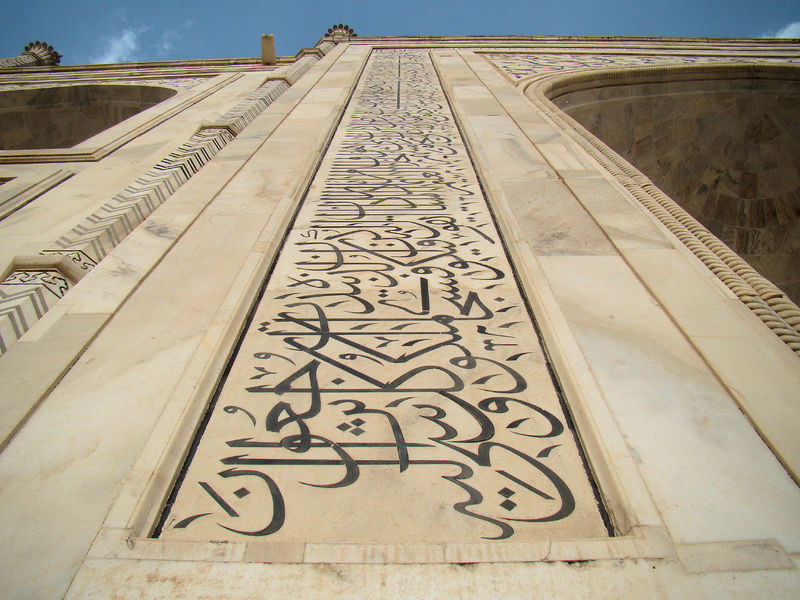Calligraphy is an integral part of the stunning Taj Mahal and compliments other elements of the structure. It mainly consists of the verses and passages from the holy book of Quran.
Taj Mahal Calligraphy

By Bjorn Christian Torrissen [CC BY-SA 3.0 (http://creativecommons.org/licenses/by-sa/3.0) or GFDL (http://www.gnu.org/copyleft/fdl.html)], via Wikimedia Commons
Black marble has been used to decorate both the south gateway and the main mausoleum with Arabic inscriptions. The texts chosen refer broadly to the themes of judgment and fruitful paradisiacal rewards for the faithful. The inscriptions over the gateway invite the reader to enter the paradise. And as one enters towards the main mausoleum, the tone of the inscriptions changes from paradisiacal to that of an impending doom that awaits the unbelievers on the Day of Judgment. However, once inside the mausoleum, the tone of the inscriptions changes yet again from judgment to paradisiacal. It is also believed that Amanat Khan even chose the passages for the calligraphy of Taj Mahal, Agra. The exterior of Taj Mahal are loaded with verses from the Quran like:
Surah 91 (The Sun)
Surah 112 (The Purity of Faith)
Surah 89 (Daybreak)
Surah 93 (Morning Light)
Surah 95 (The Fig)
Surah 94 (The Solace)
Surah 36 (Ya Sin)
Surah 81 (The Folding Up)
Surah 82 (The Cleaving Asunder)
Surah 84 (The Rending Asunder)
Surah 98 (The Evidence)
Surah 67 (Dominion)
Surah 48 (Victory)
Surah 77 (Those Sent Forth)
Surah 39 (The Crowds)
On the actual tomb of Mumtaz Mahal located in the burial chamber, the ninety names of God can be found as calligraphic inscriptions on the sides, in the crypt including "O Noble, O Magnificent, O Unique, O Eternal, O Glorious..." And the tomb of Shah Jahan bears a calligraphic inscription that reads "He travelled from this world to the banquet hall of eternity on the night of the twenty sixth of the month of Rajab, in the year 1076 Hijri". However, the central focus is provided by passages on the upper cenotaph of Mumtaz Mahal. The words of the Quranic prayer recited by the angels, implore Allah to allow the faithful to enter paradise, a touching request for God's mercy towards His devout servant, Mumtaz Mahal.